Winners of Plant Novelties Competition 2021
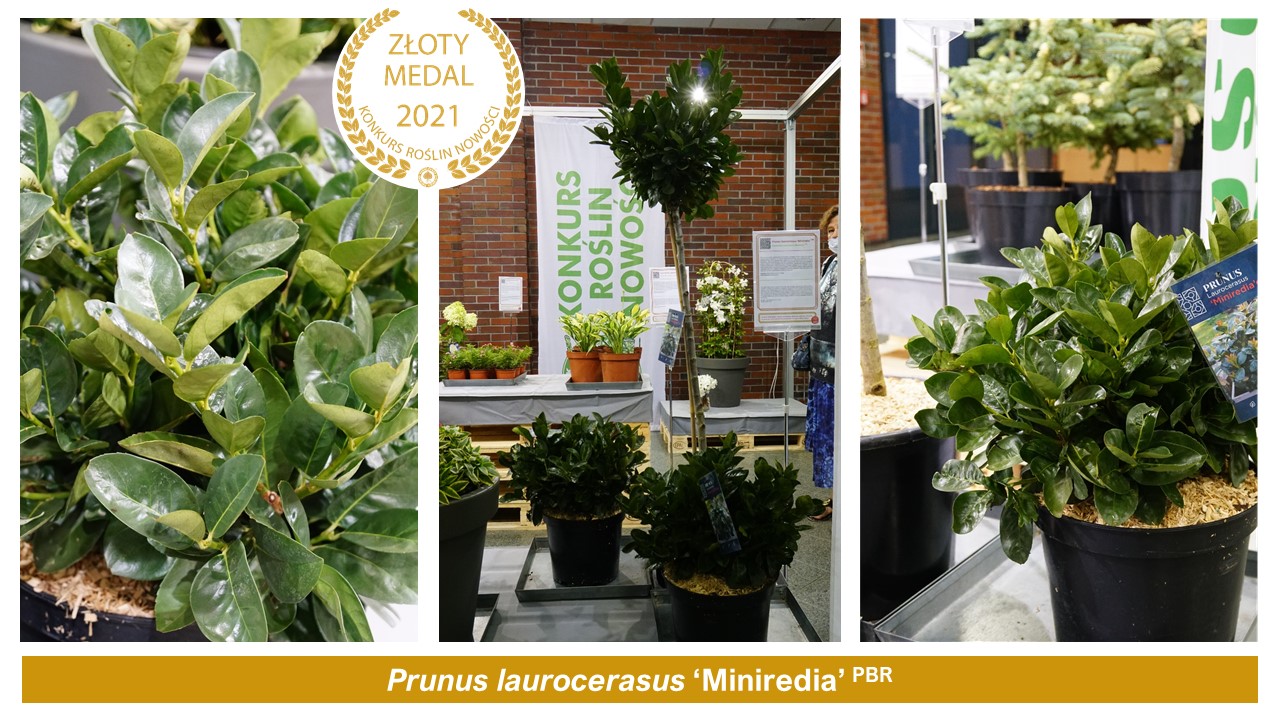
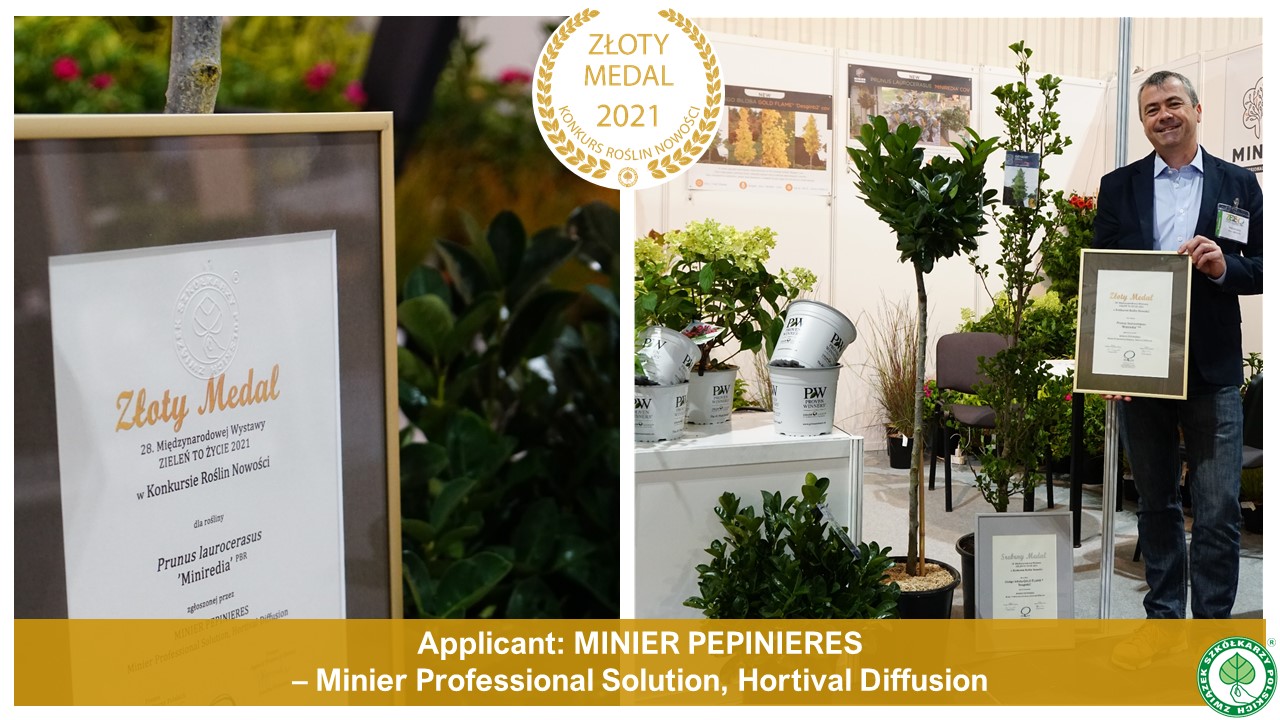
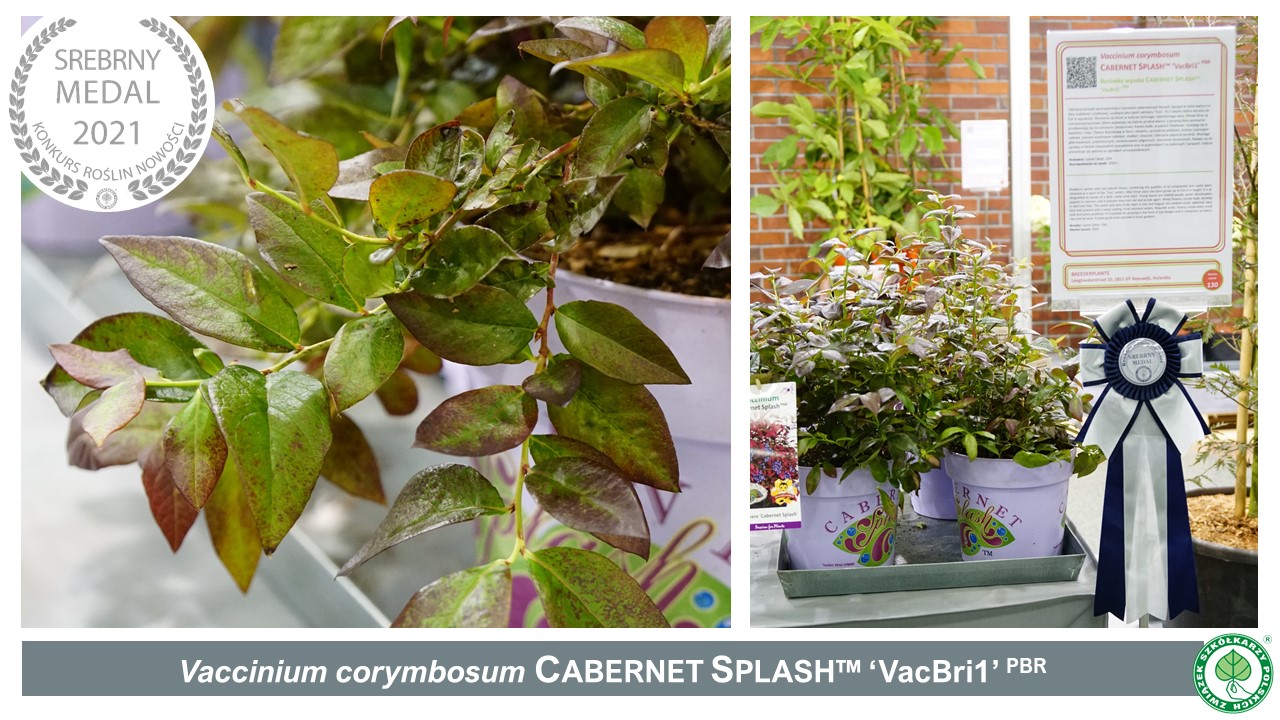
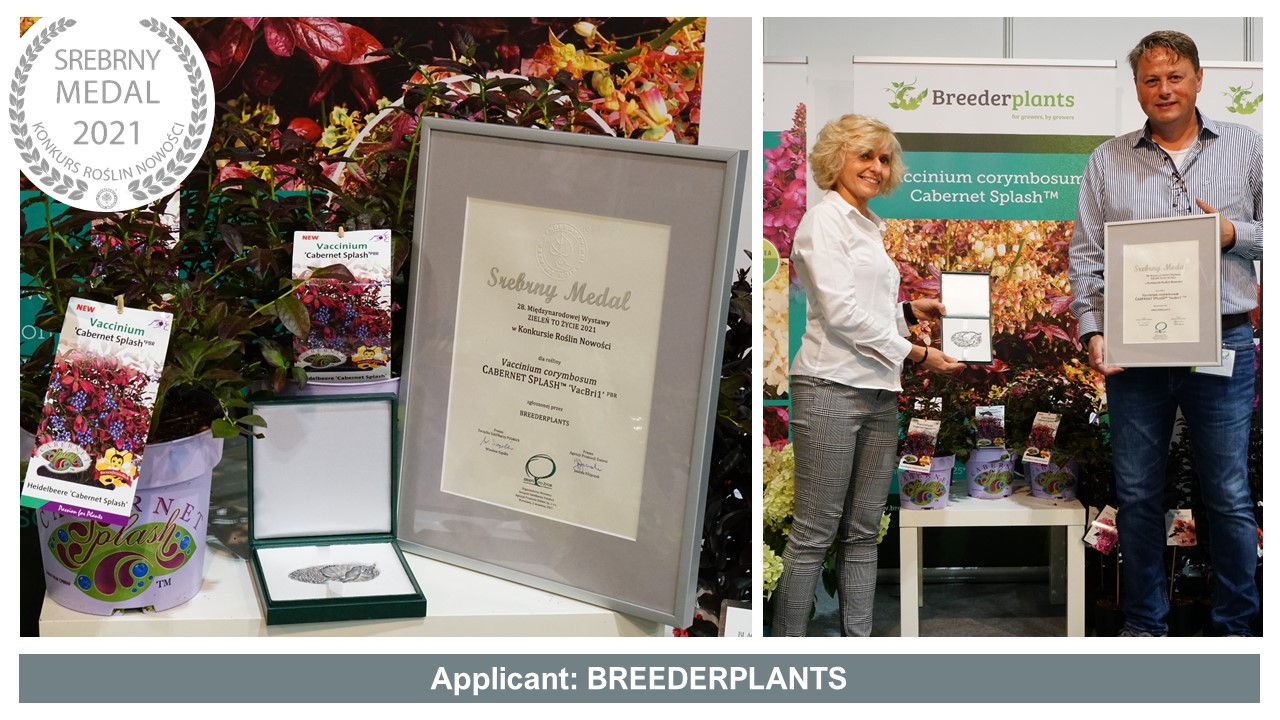
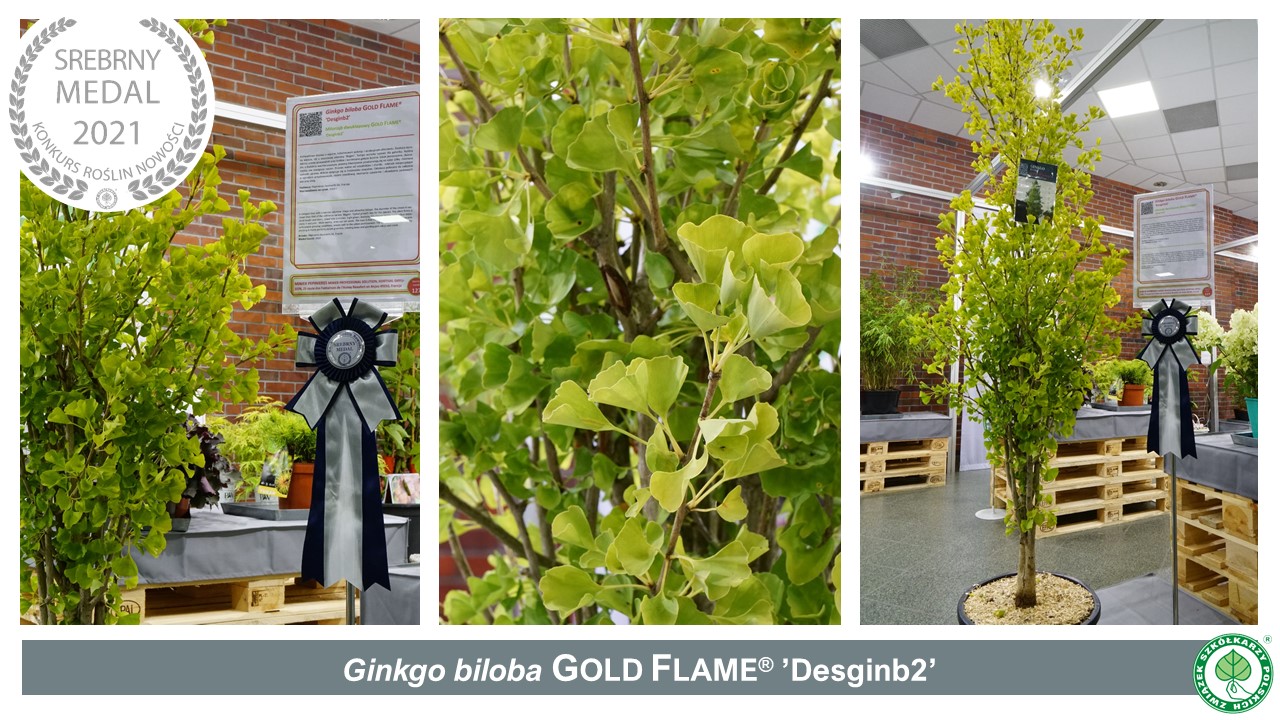
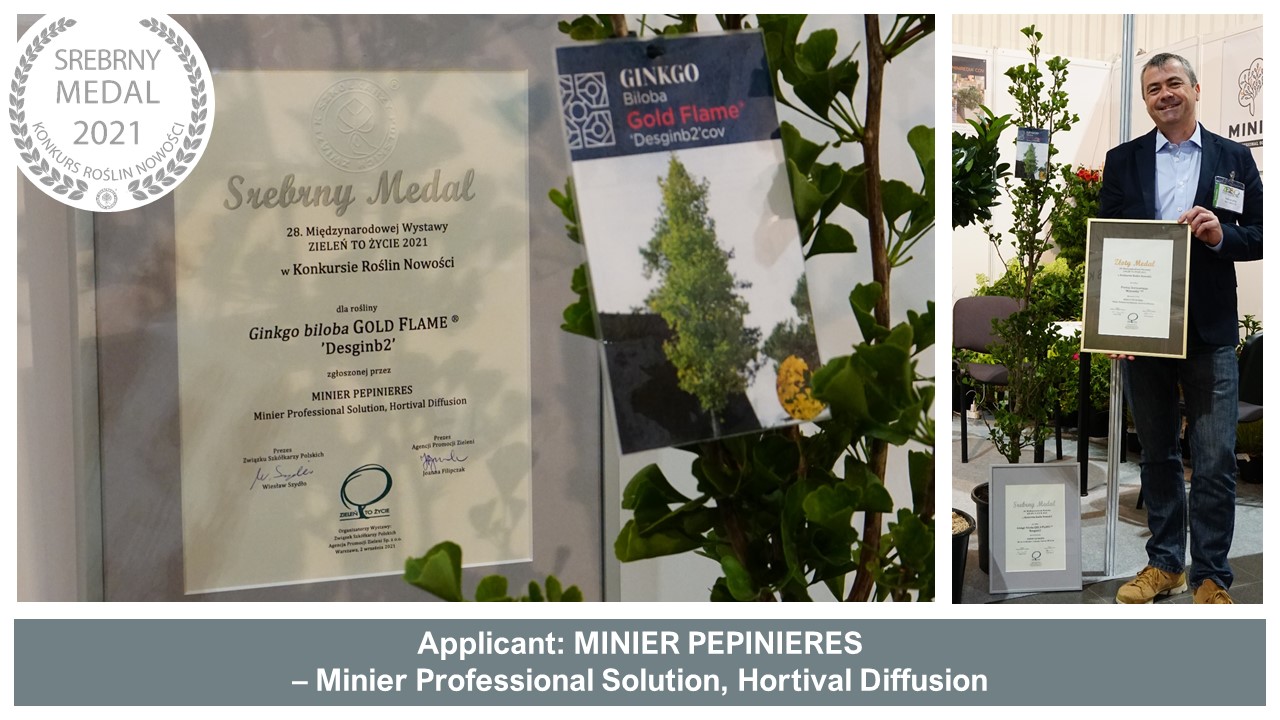
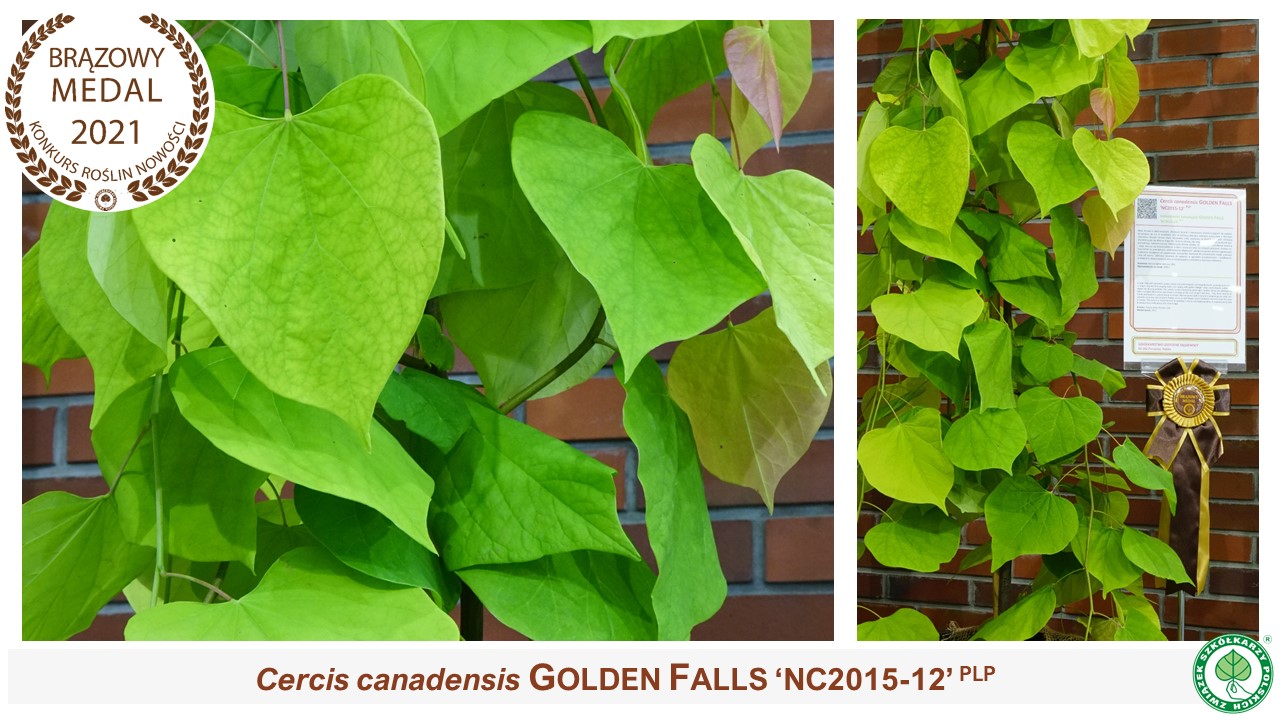
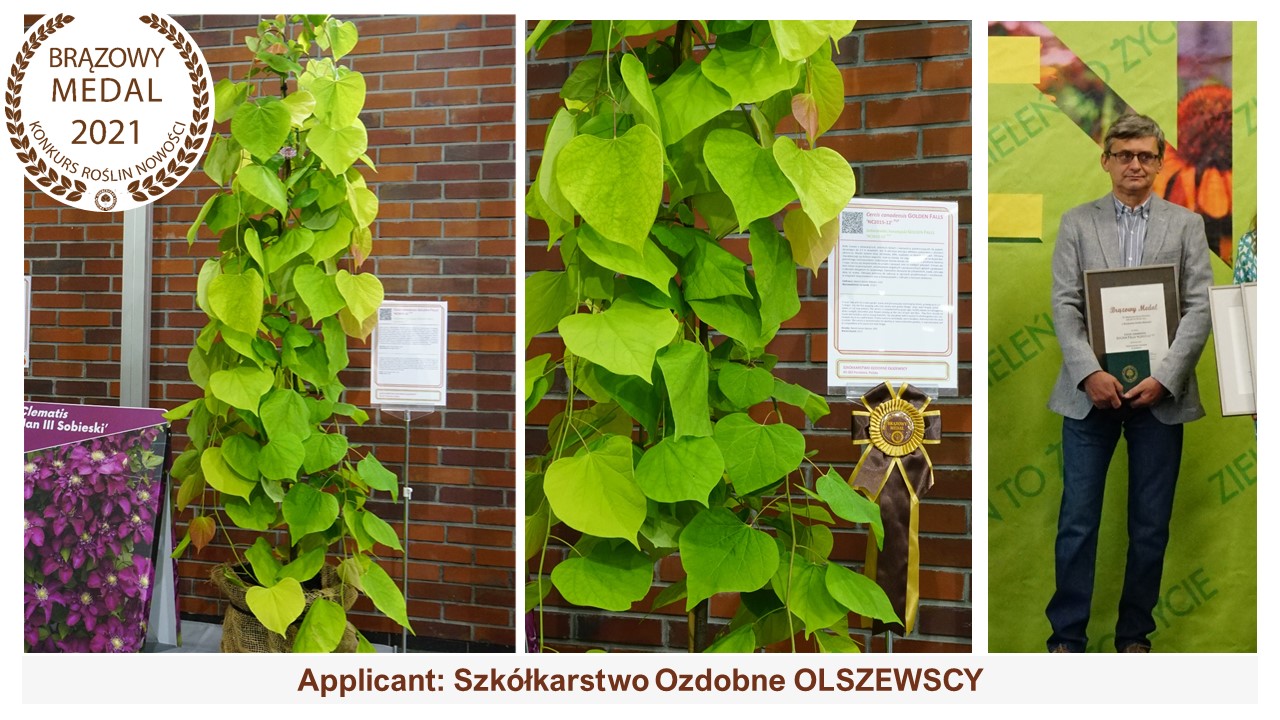
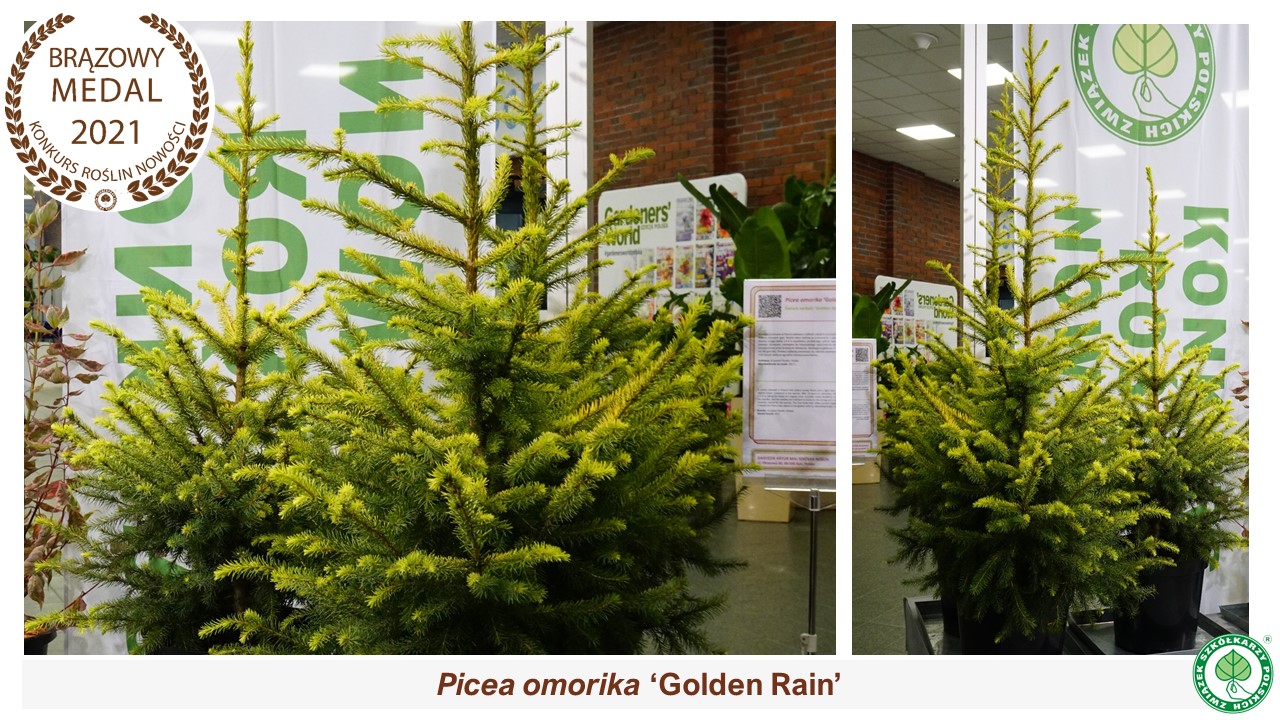
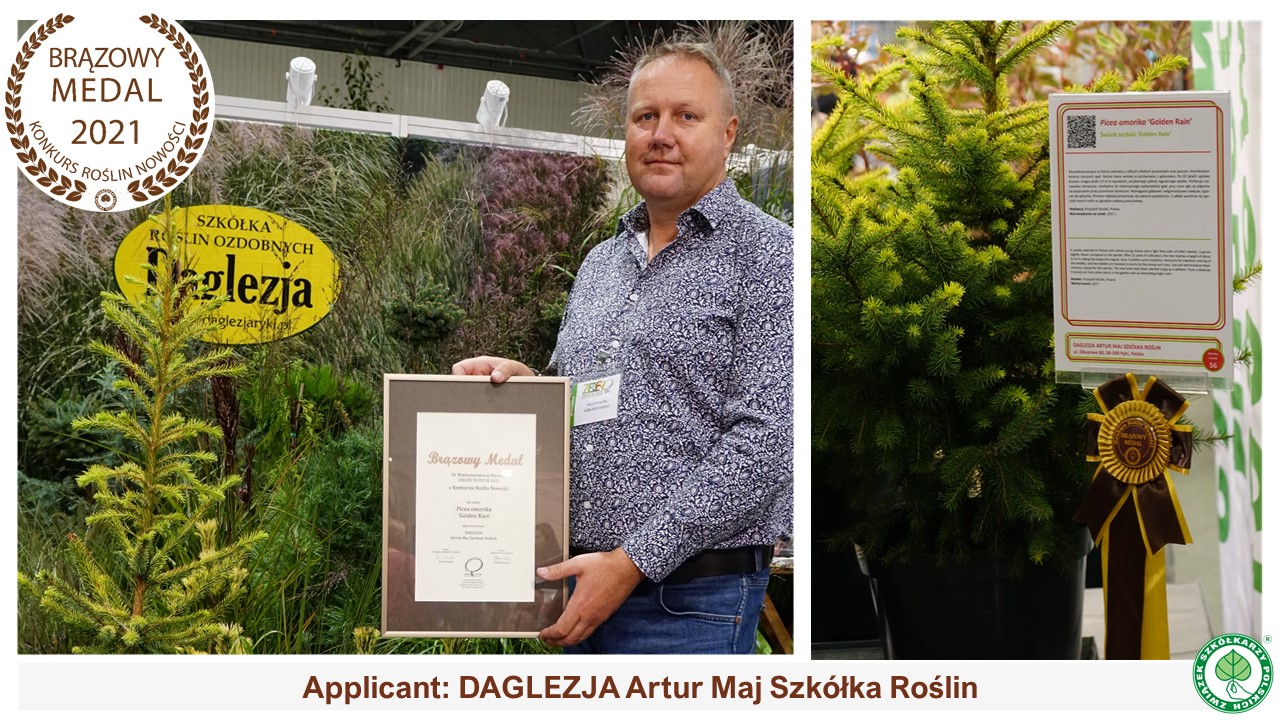
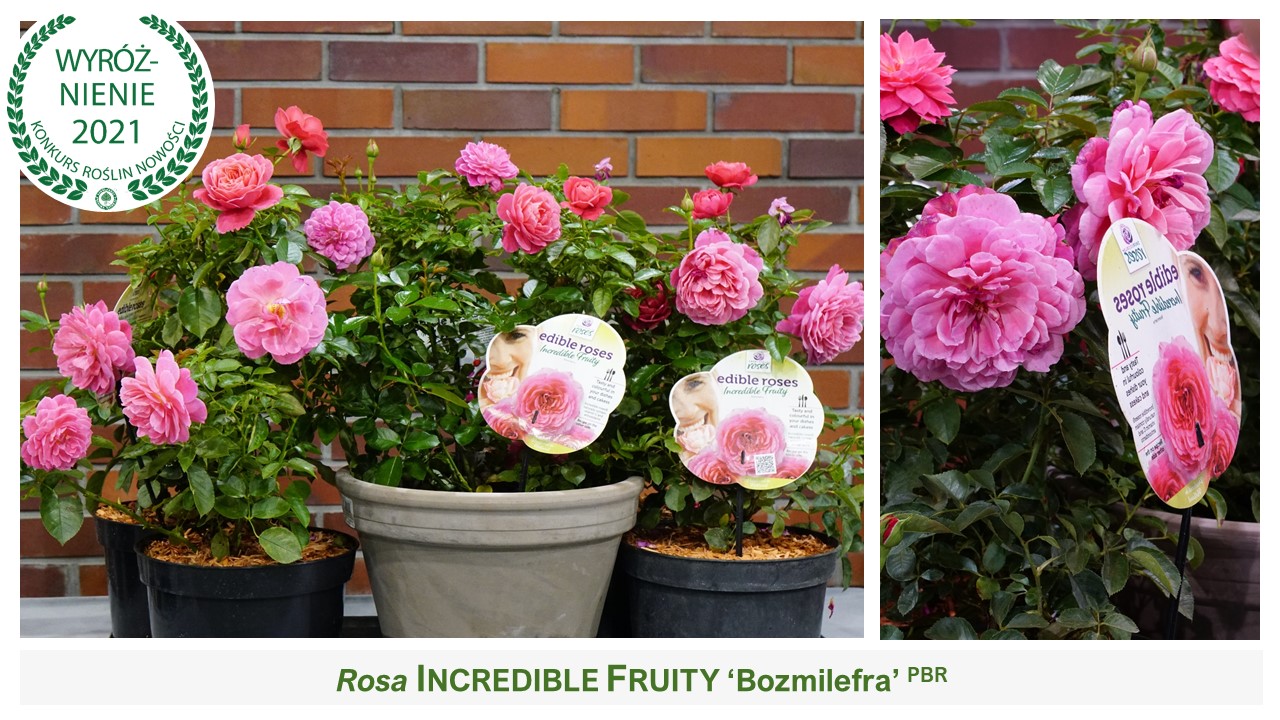

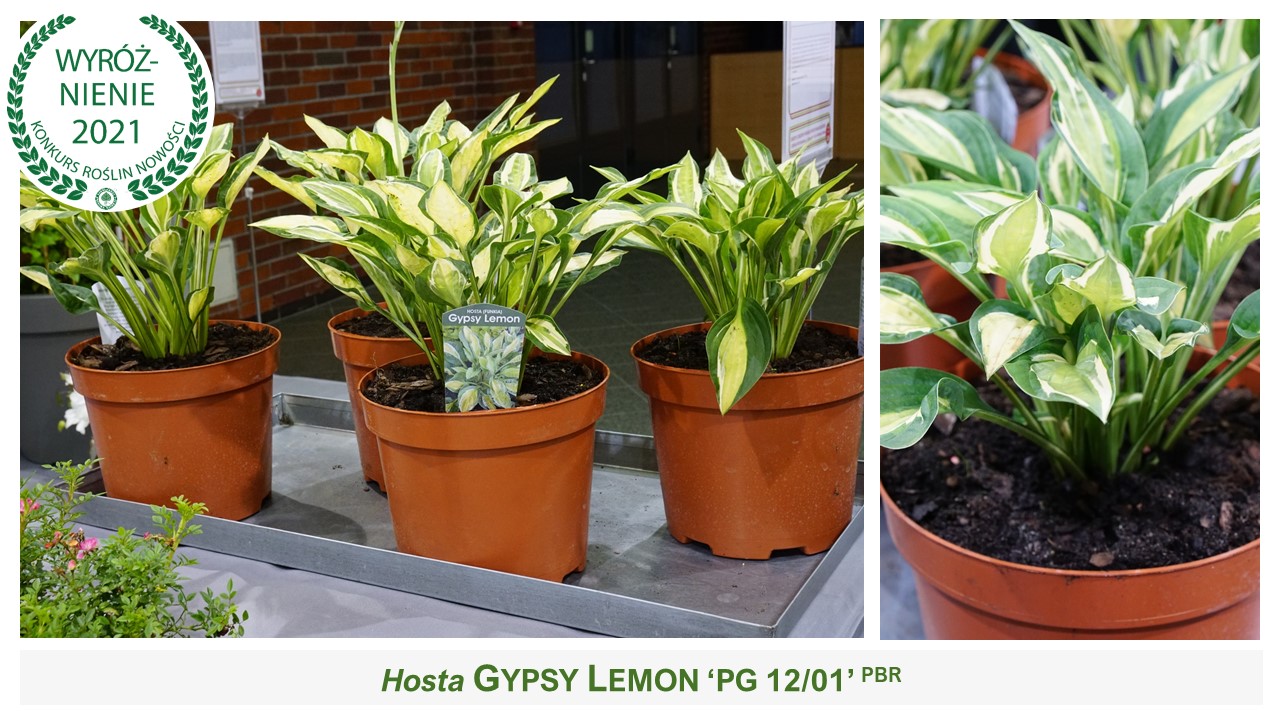
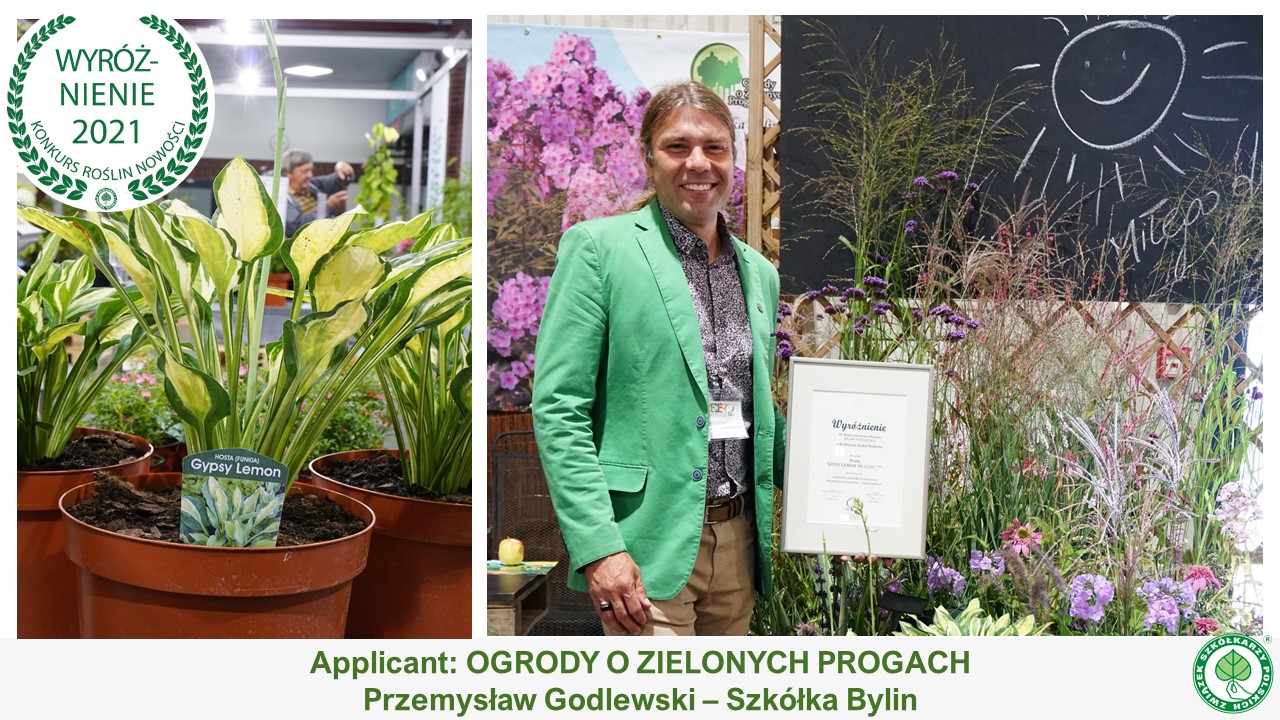
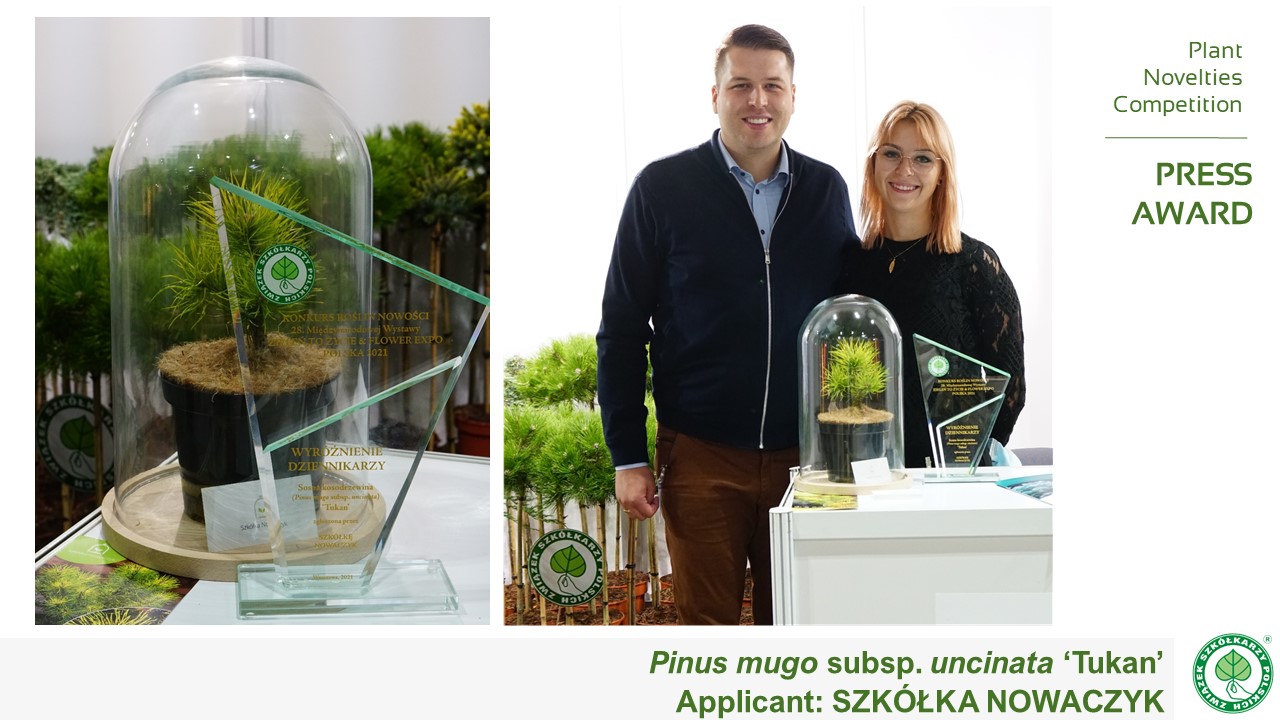

A variety of the Summer Paradise® series from the valley line, growing only up to 35 cm in height. A characteristic feature of the plant is its low compact habit, creamy-fringed leaves and large pink flowers with a yellow throat and exotic-looking, dark stripes on the inner petals. The flowers form on the tops of the stems emerging from underground rhizomes, gathered in umbellate inflorescences. The perennial blooms long and profusely, from late June to the first autumn frosts. The plant prefers fertile, humus, well-drained, moderately moist, slightly acid soils, in sunny to slightly shady positions. When planted in the ground, it requires careful protection against frost, and covering with a 10-15 cm thick layer of bark before winter. Plants grown in containers on balconies and terraces should be stored in rooms with a temperature close to 0°C. The variety is recommended for planting on the edges of flower beds and for cultivation in containers on balconies and terraces.
Breeder: HilverdaFlorist-Hortipartners, The Netherlands
Market launch: 2020
A variety with an interesting, upright habit, taking the form of a profusely flowering column or a narrow cone. It grows up to 2 m in height and 1 m width. It creates numerous, soaring shoots covered with greenish-gray, lanceolate leaves with smooth edges. Fragrant purple-violet flowers gathered at the tops of shoots in elongated paniculate inflorescences, 20-25 cm long, directed upwards. It blooms from July to fall, and attracts numerous butterflies and other pollinating insects. Systematic cutting of faded inflorescences stimulates the formation of new flower buds. The plant has average soil requirements, prefers sunny positions, sheltered from the wind in winter. Withstands temperature drops down to about -20°C. In the spring it needs to be trimmed 10 cm above the ground. The plant is recommended for planting in home gardens, singly or in groups, in compositions with other shrubs and perennials.
Breeder: Branded Garden Products Ltd. (Thompson & Morgan), United Kingdom
Market launch: 2019
A small tree with decorative golden leaves and picturesquely overhanging shoots, growing up to 2-3 m in height. It is the first weeping Judas tree variety with golden foliage. Large, heart-shaped, yellow leaf blades set on long petioles. The variety is characterized by good vigor, healthy leaves not damaged by direct sunlight. Decorative pink flowers develop at the turn of April and May. They form directly on trunks and branches, and on young branches. The tree grows well in neutral to alkaline garden soils, moderately moist and well-drained. Prefers sunny to semi-shady, warm locations, sheltered from the wind in winter. The variety is recommended for planting in home and estate gardens, in exposed places and in compositions with plants with dark foliage.
Breeder: Dennis James Werner, USA
Market launch: 2019
A Polish variety from the Late Blooming Large-Flowered Clematis Group, with always double and semi-double, dark blue flowers appearing on this year's shoots. Medium-sized flowers, 5 to 7 cm in diameter, consist of purple-blue tepals with a purple stripe. Stamens composed of yellow anthers mounted on filet-greenish threads. Main flowering runs from mid-June to the end of July. The plant repeats less abundant flowering at the end of September. Compound leaves, two or three leaflets, sometimes single, heart-shaped. The climber attaches to supports with petioles. Reaches 2-2.5 m in height. The plant prefers light, not too hot, fertile, moderately moist and well-drained soil. Frost resistant variety, useful for growing next to trellises, obelisks and other garden supports, and in large containers on balconies and terraces. It can climb up natural supports, such as coniferous and deciduous shrubs.
Breeder: Szczepan Marczyński, Poland
Market launch: 2021
A Polish variety with velvety, dark red, semi-double and single flowers. Thanks to its compact habit and abundant flowering, it is suitable for cultivation in containers on balconies and terraces. The flowers are large, 13 to 18 cm in diameter, semi-double on last year's shoots, and single on annuals, composed of 6-8 elliptical, slightly wavy, rounded tepals. Stamens composed of yellow anthers mounted on yellow-greenish threads. Some of the stamens turn into decorative staminodes. It blooms from mid-May to mid-July, starting flowering from the very bottom of the plant (20 cm from the base). Single heart-shaped, dark green leaves, whole-edge and tripartite leaves as well as elliptical, sharply pointed leaves. The climber attaches to supports with petioles. Reaches 1.5-2 m in height. The plant prefers light, not too hot, fertile, moderately moist and well-drained soil. Frost resistant variety, useful for growing next to trellises, obelisks and other garden supports, and in large containers on balconies and terraces. It can climb up natural supports, such as coniferous and deciduous shrubs that do not require hard pruning.
Breeder: Szczepan Marczyński, Poland
Market launch: 2021
Polish, profuse blooming and undemanding variety from the group of Late Large-flowered Clematis. Single, pure white flowers 10-14 cm in diameter, composed of 5-6 slightly wavy tepals with distinct veins. Stamens composed of light yellow anthers mounted on white filaments. Main flowering runs from mid-June to the end of July. The plant can repeat a less abundant flowering in late September - early October. Single, light green, dull, heart-shaped or complex trifoliate leaves. The climber attaches to supports with petioles. Reaches 2-2.5 m in height. The plant likes bright, well-lit locations. Prefers fertile, moderately moist and well-drained soils. Frost resistant variety, useful for growing next to trellises, obelisks and other garden supports, and in large containers on balconies and terraces. It can climb up natural supports, such as coniferous and deciduous shrubs.
Breeder: Szczepan Marczyński, Poland
Market launch: 2021
Shrub with multi-colored leaves and attractive red shoots ornamental and eye-catching in winter. It grows up to 2-3 m in height and similar width. The variety is characterized by white and pink-edged green leaves. The pink color of the border is especially visible in spring and early summer. In autumn, before falling, the leaves intensely change color to pink and purple. Easy to grow variety, tolerant as to soil type, resistant to frost. Best colored leaves produced when planted in sunny locations. The variety is recommended for planting in home gardens, creating expressive color compositions with other shrubs or using larger masses.
Breeder: Henricus C.E.M. Verpaalen, The Netherlands
Market launch: 2021
A variety with a columnar habit and dark, deep red, deeply cut leaves giving the tree an exotic appearance. The variety was selected from among common beech seedlings. The plant forms a thick trunk and branches evenly. Young leaves are strongly pinnatipartite, narrow, resemble 'Aspleniifolia' leaves, but are dark red. Older leaves are slightly wider; they maintain a dark color throughout the season. Requirements as for the species: fertile, well-drained, moderately moist, slightly acid soils, sunny to semi-shaded positions. Frost resistant variety. Due to its narrow habit it is recommended for planting in home and estate gardens. Good for creating natural hedges.
Breeder: Peter Verschuuren, The Netherlands
Market launch: 2021
A cultivar with a slender habit, obtained as a result of crossing F. nitida and F. murielae, distinguished by a fast growth rate and high frost resistance. An evergreen, clumping (non-invasive) bamboo, it does not require root barriers, and is resistant to diseases and pests. The plant is decorated with green, lanceolate leaves and large, delicately colored bracts on the stems, clearly visible at the base of the plant. The seventy-centimeter high specimen planted in the fall of 2018 at the National Winter-Resistant Bamboo Collection in Pruszków near Warsaw has grown 160 cm and is now 230 cm high. Noteworthy is the high frost resistance of the new variety. The plant can withstand temperature drops down to -25°C. The plant requires semi-shady and shady positions, it grows well in average, slightly acidic garden soils. Leaf curl was observed in specimens planted in full sun. The variety is recommended for use in home gardens, oriental gardens, estate greenery, in the form of individual clumps, groups or hedges.
Breeder: Johan Leendert Verweij, The Netherlands
Market launch: 2016
A compact tree with a narrow columnar shape and attractive foliage. The diameter of the crown is narrower than that of the reference variety 'Blagon'. Typical growth rate for the species. The plant forms a stout leader and short, raised side branches. Light green, leathery, fan-shaped leaves turn yellow intensively in autumn. Male variety, does not set seeds. The tree is free from pests and diseases, tolerates unfavorable growing conditions, adapts well to the urban environment. The variety is recommended for planting in home gardens, estate greenery, creating lanes and planting park alleys and roads.
Breeder: Pépinières Desmartis SA, France
Market launch: 2019
A variety from the Rex series reaching large sizes, selected in terms of suitability for cultivation in urban, park and estate green areas. The cultivar is characterized by strong growth, exceeding the classic varieties of heuchera. Under optimal conditions its clumps can reach 0.5 m in height (1.1 m during flowering) and 0.7 m in width. The leaves are large, dark, from almost black to dark green, they are firmly and densely placed on the stem, which makes the plant resistant to strong gusts of wind, rain or even hail. Resistant to frost, lively, it grows well even in dry and shaded places. Prefers semi-shady positions and, after becoming well rooted in the ground, also tolerates direct sunlight. It fits well with other perennial plants in perennial beds, looks good in softer homogeneous groups, especially during the flowering period.
Breeder: AB-Cultivars, The Netherlands
Market launch: 2021
A Polish variety of hosta with decorative, tricolor leaves, forming clumps up to 40 cm high. It is characterized by the original coloring of the leaf blades, which are dark green at the edges, further in they have bright white streaks and in the middle they are light green to yellow. The coloration changes during the growing season. In July and August, the plant develops bell-shaped, pale lavender flowers gathered in loose inflorescences, raised above the leaves on stiff and leafy stems growing 70 cm high. This plant prefers fertile, humus, loamy, moderately moist soils, semi-shady and shady positions, and is resistant to frost. Recommended for planting in home gardens, flowerbeds in parks, estate greenery and cultivation in containers.
Breeder: Przemysław Godlewski, Poland
Market launch: 2021
Dwarf shrub of the PETITE™ series, growing only up to 80 cm in height and 40 cm in width, creating very large paniculate inflorescences at the tops of the shoots. The inflorescences take the shape of elongated cones. They are composed mainly of sterile flowers and a small number of fertile flowers. During flowering, the flowers change color from white, to cream, and then to the color of raspberries. The decorative shrub flowers from July to October. The easy-to-grow plant is resistant to frost, though requires sunny locations. Thanks to its small size, this variety is versatile and recommended for planting in public, urban and estate green areas. Suitable for growing in containers on balconies and terraces.
Breeder: Liss Forest Nursery Limited, United Kingdom
Market launch: 2021
Low, compact shrub from the PETITE™ series, growing only up to 60 cm in height and 90 cm in width. The plant is decorated with large paniculate inflorescences, formed on the tops of annual shoots, comprised of sterile and fertile flowers. During flowering, the flowers change color from aquamarine, to white, pink ant to brick red in autumn. The shrub blooms profusely from July to autumn. The plant is easy-to-grow, resistant to frost, requires sunny locations. Thanks to its small size, this variety can be used universally. It is recommended for planting in public, urban and neighborhood green areas, also as a ground cover plant. Suitable for growing in containers on balconies and terraces.
Breeder: Jacques Couturieux, France
Market launch: 2021
A small, compact deciduous shrub that grows up to 1.2 m in height and 70 cm in width. The plant blooms profusely on this year's shoots, from July to October. Although its inflorescences are large and densely filled with flowers, stiff shoots are able to support their weight. Initially, the inflorescences are light green, then turn white, at the end of flowering they turn light pink. They are filled with flowers reminiscent of hyacinth flowers, unusual for this species. The plant prefers sunny or semi-shady positions, fertile, moist but well-drained soil. Frost-resistant. Spring pruning helps to keep a compact habit. Suitable for growing in small home gardens and in containers. It can be planted singly, as a solitaire, or in groups, in the form of a natural low hedge.
Breeder: Guido Rouwette, The Netherlands
Market launch: 2018
A Polish local variety selected in the Lublin region, producing large and tasty fruits. The tree grows up to 10 m in height, forming a wide, spreading crown. Large, light green leaves, composed of 5-9 leaflets, unfold at the turn of April and May together with the flowers. Male flowers are in the form of hanging catkins up to 10 cm long, female flowers are collected from 2 to 5 on shoots. The large fruits ripen at the end of September, they are up to 5 cm in diameter. The nut shell is thin and soft, fully filled with a tasty light kernel. The variety is recommended for growing in home gardens and allotments, on average, well-drained, moderately moist soils, in sunny and secluded positions.
Breeder: no information
Market launch: 2019
Slow-growing, dwarf variety with variegated needles, obtained by selecting seedlings. A tree with a loose and irregular crown, reaches 2-3 m in height after 10 years of cultivation. Seasonal, cream-green, mottled needles usually appear in mid-May, about 2 weeks later than the species, which makes them less susceptible to frosts. In autumn they turn brown and quickly fall off along with some of the shoots. Arrow-type main trunk, running straight from the base to the top. The side branches are most often inclined upwards. The tree has quite high soil and moisture requirements, prefers fertile, humus and moist soil, it grows well in wetlands and marshes. Frost-resistant variety, tolerates polluted air, tolerates urban conditions well.
Breeder: Andrzej Kujawa, Poland
Market launch: 2021
A variety selected in Poland with yellow young shoots and a light lime color of older needles. It grows slightly slower compared to the species. After 10 years of cultivation, the tree reaches a height of about 3.5-4 m, taking the shape of a regular cone. It prefers sunny locations, necessary for intensive coloring of the needles, and the needles are resistant to burns by the strong sun's rays. Low soil and moisture requirements, typical for the species. The tree looks best when planted singly as a solitaire. From a distance, it stands out from other plants in the garden with an interesting bright color.
Breeder: Krzysztof Wolski, Poland
Market launch: 2017
A Polish variety of blue spruce with blue colored needles, irregularly appearing cream-discolored fragments of branches within the crown. The plant takes regular form of a cone. Growth typical for the species, after 10 years of cultivation, the tree reaches 2-3 m in height. Stiff, prickly, silver-blue needles, cream on some of the shoots, and their color remains throughout the summer and winter. A tree with low soil and moisture requirements, fully frost resistant. Recommended for planting in exposed places. Young strains easily form a straight leader, which is a significant advantage in the nursery production and cultivation of this variety.
Breeder: Sylwester Szelest, Poland
Market launch: 2020
A Polish variety of mountain pine with originally two-colored needles. The plant takes the form of a hemispherical bush and grows up to 2 m in height. Its characteristic feature is the yellow-green color of the needles. The needles are thick, stiff, arranged radially around the shoots. Their bases turn pink, especially near the apical buds, and during periods of frost they become clearly pink-red. Fully frost-resistant, light-loving variety, indiscriminate in relation to the soil. It grows excellently in permeable, moderately moist soils, in sunny positions. The variety is recommended for home gardens, rockeries and moors, for creating colorful, contrasting compositions with conifers.
Breeder: Nikodem Nowaczyk, Poland
Market launch: 2020
The smallest dwarf variety of laurel on the market, with a compact, spherical shape. After 10 years of cultivation, it reaches no more than 1 m in diameter. The plant forms short, highly branched shoots and evergreen, shiny, leathery leaves. Young shoots are orange-red, contrasting nicely with the green of older leaves, which attracts attention in spring. The plant is tolerant of the soil. It grows best in sandy-loam, moderately moist soils and in semi-shaded positions. It looks good when planted singly and in groups, in exposed places. The plant is recommended for home gardens, rockeries, estate and park greenery, planting in flower beds, and for creating low hedges. Suitable for growing in containers on balconies and terraces.
Breeder: Hortival Diffusion S.A.S., France
Market launch: 2020
Dwarf rose variety resembling a shrublet, with a very dense, cushion-like habit. The plant grows only up to 10 cm in height and 20-30 cm in width. It blooms profusely, covering itself in summer with miniature white and pink flowers made of 5 rounded petals surrounding yellow stamens. It does not bear fruit. The shoots of the plant are devoid of thorns. The bush does not require pruning, it is frost resistant. It grows well in average, moderately moist garden soils, in sunny positions. Suitable for planting in rock gardens, as a ground cover, trauma to growing in containers.
Breeder: Tomoki Yokota, Japan
Market launch: 2021
A variety from the series of INCREDIBLE ROSES® bedding roses grown for aromatic, edible flowers. The shrub grows up to 80 cm in height, blooms very intensively in June and repeats flowering in August. The flowers are 7 cm in diameter, full, dark pink, composed of an average of 138 small petals emitting a fruity aroma reminiscent of raspberries. These petals can be used to decorate cakes, desserts, salads and other dishes, or they can be made into preserves, syrups or rose water. The petals contain substances beneficial to health, incl. vitamin C, antioxidants, essential oils. The variety is suitable for cultivation in the ground and containers. The requirements do not differ from other bedding roses. Frost-resistant. In spring, bushes should be pruned to 1/3 of their height.
Breeder: Pheno Geno Roses, Serbia/The Netherlands
Market launch: 2019
A dense shrub with a compact habit, blooming profusely and bearing fruit also when grown in containers. The variety belongs to the Hybrid-Rugosa group, obtained as a result of crossing R. rugosa with R. virginiana. One-year shoots almost without thorns, young leaves are light green. Intensive pink flowers, light pink in highly sunny positions. It blooms in June and July. Spherical, flattened fruits ripen in August and September, becoming a scarlet red color. Potential for use in processing - making jams or preserves. The variety is easy to cultivate, fully frost-resistant, tolerates difficult habitat conditions, and due to its compact habit, features a wide range of applications in home gardens, plots, urban and housing estate greenery. The shrubs become exceptionally ornamental in autumn, when the bright red fruits stand out against the background of darkening leaves.
Breeder: Spek Rose Breeding International B.V., The Netherlands
Market launch: 2020
Shrub with deeply pinnatisect yellow leaves and a light, openwork habit. It grows up to 2-3 m in height and similar width. Lacy, large, compound leaves with heavily reduced and incised laminae, the youngest are brownish, later turning lemon-yellow. Tiny white flowers are gathered in small paniculate inflorescences, appearing in early May with developing leaves. The fruit, in the form of small, spherical, scarlet-red berries, ripens from mid-June to July. The shrub is undemanding as to cultivation. It grows well in sunny and semi-shaded positions, in average garden soils, moderately moist, well-drained, slightly acidic to alkaline. Fully frost resistant variety, regenerates well after pruning. Cutting after flowering recommended, then the plant forms strong and dense, leafy shoots. The variety is recommended for cultivation in home gardens and parks, in color compositions with other shrubs and as a solitaire in exposed places.
Breeder: Timothy D. Wood, USA
Market launch: 2014
Blueberry variety with red-colored leaves, combining the qualities of an ornamental and useful plant, obtained as a sport of the 'Toro' variety. After three years the plant grows up to 0.8 m in height. It is distinguished by leaves of a dark, noble wine color. Young leaves are reddish-purple, green discoloration appears in summer, and in autumn they turn red and purple again. White flowers, purple buds, develop in April and May. The sweet and tasty fruits ripen in July and August, are medium-sized, spherical, navy blue and covered with a waxy coating. Frost resistant variety. Requires acidic, humus, moderately moist soils and sunny positions. It is suitable for growing in the form of low hedges and in containers on balconies and terraces. It looks good when planted in moor gardens.
Breeder: Lynne Caton, USA
Market launch: 2020